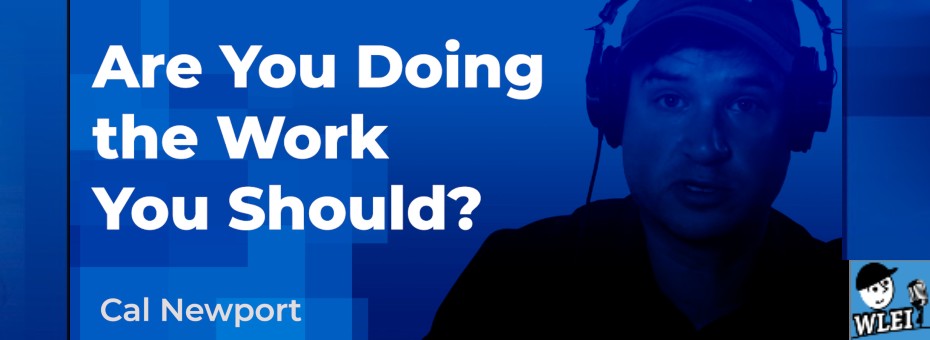When it comes to the question of getting your work done effectively, too few of us start by asking one essential question: are you seeking to get the right work done? In this exchange from the recent WLEI podcast, author Cal Newport notes that new electronic communication tools have indeed boosted the ability of any individual to handle more related to getting things done directly. And yet, he notes that shifting more of this work rarely explores the key question of whether this work is in fact essential in the first place.
You can listen to the full podcast, Imagining a World Without Email, and browse all of our previous podcasts in our WLEI library.
Tom Ehrenfeld: “Yeah. I think that’s the hidden message about a world without email is that we’re asking people to do way too many of the things that they shouldn’t be doing in the first place, thar we’re asking them one question, so we’re not asking, is this work you really should be doing? Does this add value? Is it something you’re good at? Does this move the organization closer to its purpose? That we just fill people’s inboxes and other relentlessly mushrooming forms of other electronic communication with distracting minutia.”
Cal Newport: “Yeah. Let me just add, the other thing that happened is electronic ‘productivity enhancing tools,’ we completely bungled that shift in the market when personal computers came along that could go on the desktop and then could network those computers. We bungled that productivity potential because what did we do? Instead of saying, oh great, now the support staff can be supercharged, now the support staff has all of these tools, the same support staff can maybe support even more frontline workers, etc. Instead of doing that, we said, let’s fire the support staff. Great, we don’t need a typist because WordStar is just easy enough that this executive can type up their own memos, and we don’t have to pay the typist.”
“That’s true. Except for, you multiply that by four or five other things that now is on that executive’s plate, you need to have those executives to get the same amount of work done. Oh, it would have been much cheaper to have one executive with a dedicated support staff. So, we bungled the arrival of productivity enhancing technology by using it to basically move tons of administrative work that used to be more specialized and isolated onto the plate of the people who were also trying to do the frontline value production. It was a big mistake, I think, and it’s one of the reasons why so little actually gets done, even when we’re paying people huge salaries.”
Learn More
Discover how lean thinking and practice help organizations get the right things done by using value-stream mapping to see the obstacles that get in their way. Learn how identify your communication problems by taking LEI’s Learning to See Using Value-Stream Mapping, a go-at-your-own pace, web-based workshop based on the innovative approach outlined in the landmark Learning to See Workbook.





